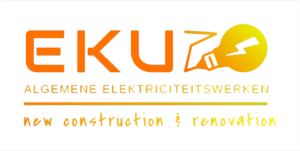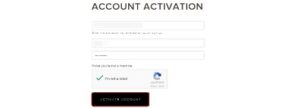Contents
Book value can also refer to the value of a company minus its intangible assets and liabilities. The term book value is derived from the accounting practice of recording an asset’s value based upon the original historical cost in the books minus depreciation. Carrying value looks at the value of an asset over its useful life; a calculation that involves depreciation. For example, the Investment Company Institute, a U.S. industry association of asset management firms, strongly supported the use of fair value accounting when lobbying the SEC in 2008 on FASB Statement 157, which helps define fair value. And in 2000 and 2001 the then three largest investment banks—Goldman Sachs, Morgan Stanley, and Merrill Lynch—were all enthusiastic supporters of fair value rules for mergers and acquisitions during FASB deliberations on the subject.
So there will be a profit of $200 if the is online trading secure? security sells the asset in the market. And are most likely to experience a steep fall in the market prices of the stocks as investors have been too positive about the stock, and the market needs to be corrected. When the company’s market value exceeds the book value of the company, the market is positive about the future earnings prospects and increased investments. As a result, it increases profits, which will increase the market value of the company and, in turn, higher returns on the stock. A company that has consistently higher profits and increased profits will have a market value greater than the book values of the company. In contrast, this value of an asset is related to the profit and loss and balance sheet item.
If at that date the fair value has fallen to $575,000 with an estimated cost to sell of $45,000, the company would recognize an additional $25,000 loss. ABC would report a total loss of $220,000 on its year 1 income statement. It sells the disposal group in May of year 2 for $595,000 with a $50,000 cost to sell. The disposal proceeds are $545,000—$15,000 more than the carrying value. ABC would report this gain on its income statement, as described in the next section. A company must continue to classify long-lived assets it plans to dispose of by some method other than by sale as held and used until it actually gets rid of them.
Corporate assets and overheads
She holds a Bachelor of Science in Finance degree from Bridgewater State University and helps develop content strategies for financial brands. Fortunately, the IASB plans to simplify the requirements a bit by removing the requirement to use pre-tax inputs in the calculation. I highly recommend reviewing it in the accompanying excel fileavailable for download.
Discontinued operations less applicable taxes or benefits must be reported as a separate component of income before extraordinary items and the cumulative effect of accounting changes. ABC will report the results of discontinued operations in its year 1 income statement, as shown in exhibit 4. A reporting entity may commit to a plan to sell a long-lived asset shortly after its balance sheet date, but before issuance of its financial statements.
The appropriateness of the measurement methods, including related assumptions, used by management in determining fair value and the consistency in application of the methods. The valuation method is appropriate in relation to the business, industry, and environment in which the entity operates. The integrity of change controls and security procedures for valuation models and relevant information systems, including approval processes. The process used to develop and apply management assumptions, including whether management used available market information to develop the assumptions. The types of accounts or transactions requiring fair value measurements or disclosures . The following auditing standard is not the current version and does not reflect any amendments effective on or after December 31, 2016.
Company
Then, the future expected cash flows are discounted, using a risk-free discount rate that forces risks to be articulated in the probability of the cash flow estimates. Carrying value is the reported cost of assets in the company’s balance sheet, wherein its value is calculated as the original cost less than the accumulated depreciation/impairments. The intangible asset is calculated as the actual cost less the amortization expense/impairments. Different from the carrying value, the fair value of assets and liabilities is calculated on a mark-to-market accounting basis. In other words, the fair value of an asset is the amount paid in a transaction between participants if it’s sold in the open market. Due to the changing nature of open markets, however, the fair value of an asset can fluctuate greatly over time.
- IAS 36.54 requires future cash flows in foreign currency to be discounted using a discount rate appropriate for that specific currency and translated using the spot exchange rate at the date of the value in use calculation.
- For our Company, the only assets and liabilities that are adjusted to fair value on a recurring basis are investments in equity and debt securities classified as trading or available-for-sale and derivative financial instruments.
- The above machinery has a depreciation value of $4000 and has a useful life of 15 years.
- Revalued assets are depreciated in the same way as under the cost model .
The difference between the recoverable value and the carrying amount is used to determine an impairment loss. When the fair value or recoverable amount is greater than the carrying value at any year, the impairment loss can be reversed. However, the reversal can only be possible up to the extent of impairment loss recorded in earlier periods. WACC is the discount rate most often used for value in use calculations. One could easily write a 500-page book on calculating WACC, but a simple approach is presented below.
Calculating the Carrying Amount of Fair Value Investments
The fair value of “Cash and balances with central banks” has been considered equivalent to its carrying amount, because they are mainly short-term balances. For best practices on efficiently downloading information from SEC.gov, including the latest EDGAR filings, visit sec.gov/developer. You can also sign up for email updates on the SEC open data program, including best practices that make it more efficient to download data, and SEC.gov enhancements that may impact scripted downloading processes. Please declare your traffic by updating your user agent to include company specific information. It is possible to determine the asset’s recoverable amount even though it is part of a CGU .
Therefore, a benchmark rate for companies in similar industry operating in the same country/region should be used instead of entity-specific one. Risks specific to the asset for which the future cash flow estimates have not been adjusted. If the carrying amount is higher than the recoverable amount, the asset is impaired, i.e. entities need to decrease the value of the asset through recognition of an impairment loss.
This section addresses considerations similar to those in section 342 as well as others in the specific context of fair value measurements and disclosures in accordance with GAAP. Due to the loss of control, the sale would be treated as a sale of 100% of the ownership interest. It would not be appropriate to reclassify only the pro rata portion of each of the subsidiary’s balance sheet line items being sold to held for sale in the reporting entity’s balance sheet. See BCG 5.5 for additional details on changes in interest resulting in loss of control.
If management relies on historical financial information in the development of assumptions, the auditor considers the extent to which such reliance is justified. However, historical information might not be representative of future conditions or events, for example, if management intends to engage in new activities or circumstances change. Assumptions ordinarily are supported by differing types of evidence from internal and external sources that provide objective support for the assumptions used. The auditor evaluates the source and reliability of evidence supporting management’s assumptions, including consideration of the assumptions in light of historical and market information.
Risk free rate
If the assets under evaluation are still in the construction or development stage, then the cash flows should be based on the future service potential of the assets once they are substantially complete. Interest payments capitalized under SFAS 34 must be included in the cash flow estimates. Difficult economic conditions should always call into question the values placed on assets in corporate balance sheets. As the going gets tough, managers size up their operations and look for ways to cut costs, including costs related to asset carrying values. Many corporations, auditors, and analysts expect to see a lot of restructuring and writedowns in the near future.
Such losses will be reported in discontinued operations in the period in which they occur. A question arises as to whether the lessee should include this liability as part of the carrying amount of the CGU being tested for impairment if the estimates of future cash flows include 100% of the future lease payments . For ACCA candidates studyingFinancial Reporting , consolidated financial statements are a key topic. A central part of this syllabus area is accounting for the acquisition of a subsidiary which will test the concept of fair value.
Increasing regulation and investor demands for returns and transparency continue to challenge the https://coinbreakingnews.info/ management sector. Tax policy Tax policies are constantly evolving and there are a number of complex changes on the horizon that could significantly affect your business. Indirect international tax Using our finely tuned local knowledge, teams from our global organisation of member firms help you understand and comply with often complex and time-consuming regulations. Our tax services help you gain trust and stay ahead, enabling you to manage your tax transparently and ethically. Audit quality monitoring Having a robust process of quality control is one of the most effective ways to guarantee we deliver high-quality services to our clients.
Examples of such costs include broker commissions, legal and title transfer fees and closing costs necessary to transfer title. There is a significant adverse change in the business climate in one of the industries North Bay Inc. operates in. The company believes this change could impair some of its long-lived assets.
In such a case, the present value of cash outflow can be added separately to the value in use if the provision is taken into account in the calculation of carrying amount. Again, remember about using proper discount rate for the cash flows for which provisions are recorded . On the other hand, some liabilities, e.g. long term post-employment benefits, are recognised and paid on an on-going basis, so it means that future payments partially relate to future events and these payments should be included in projected cash flows.





